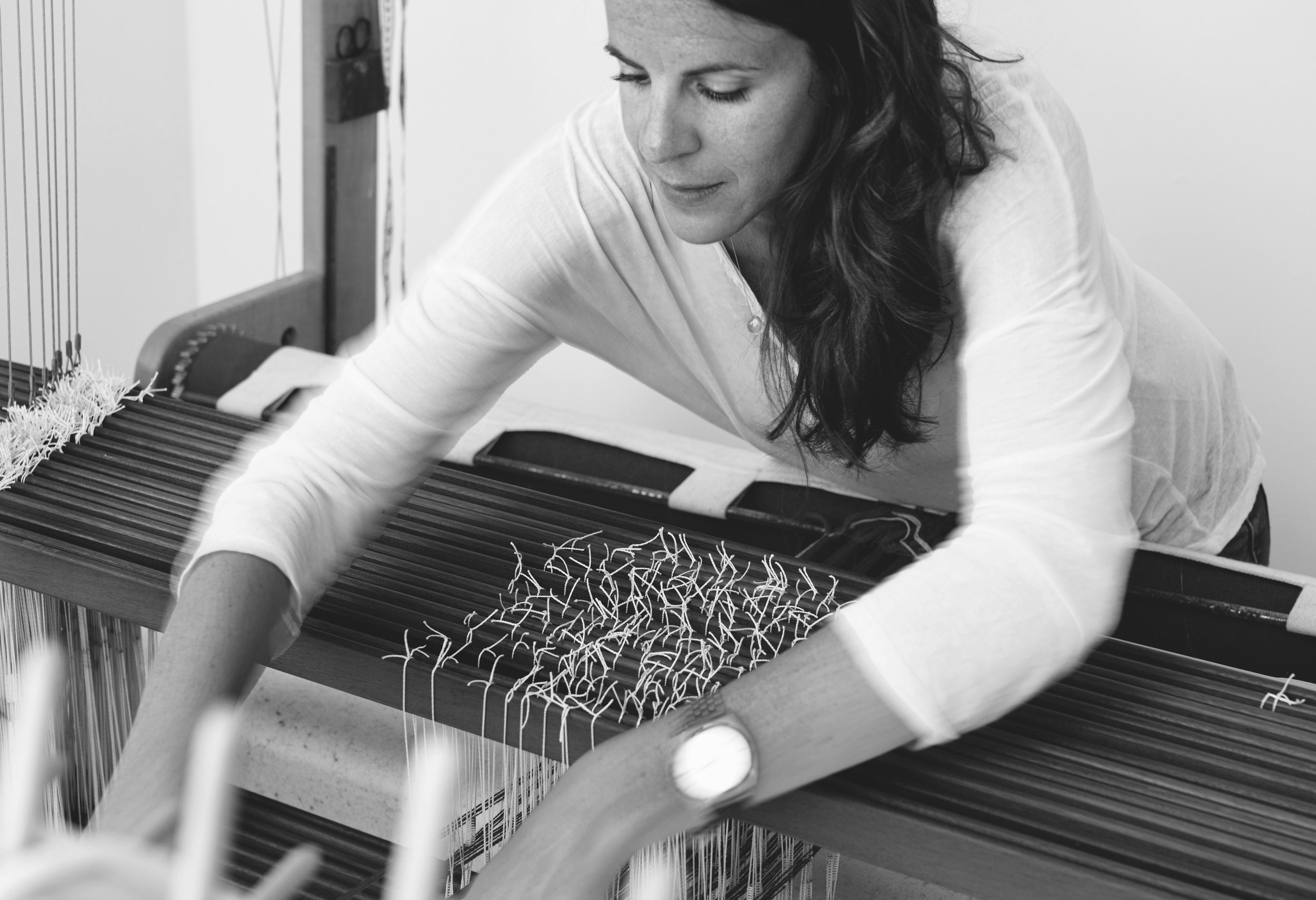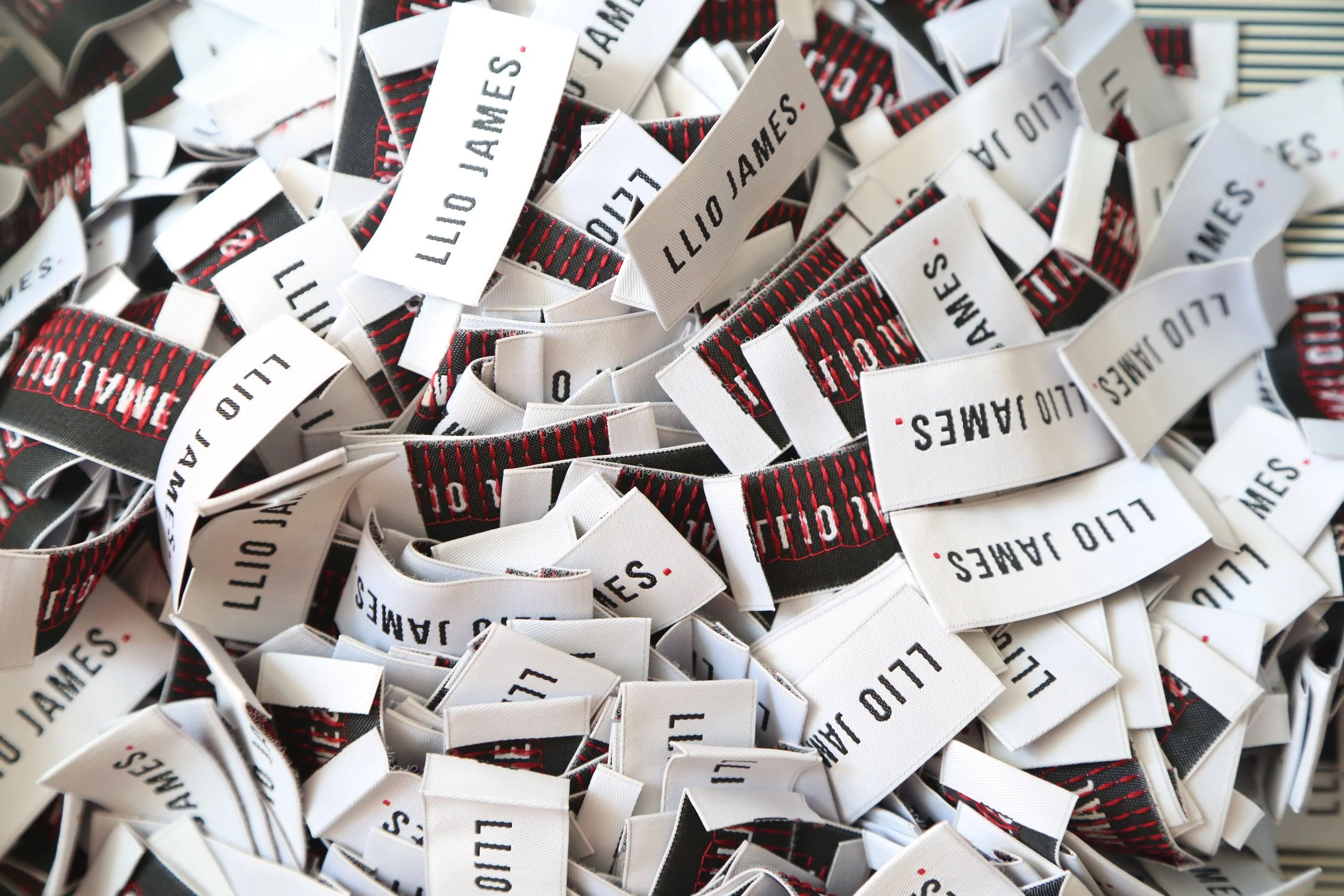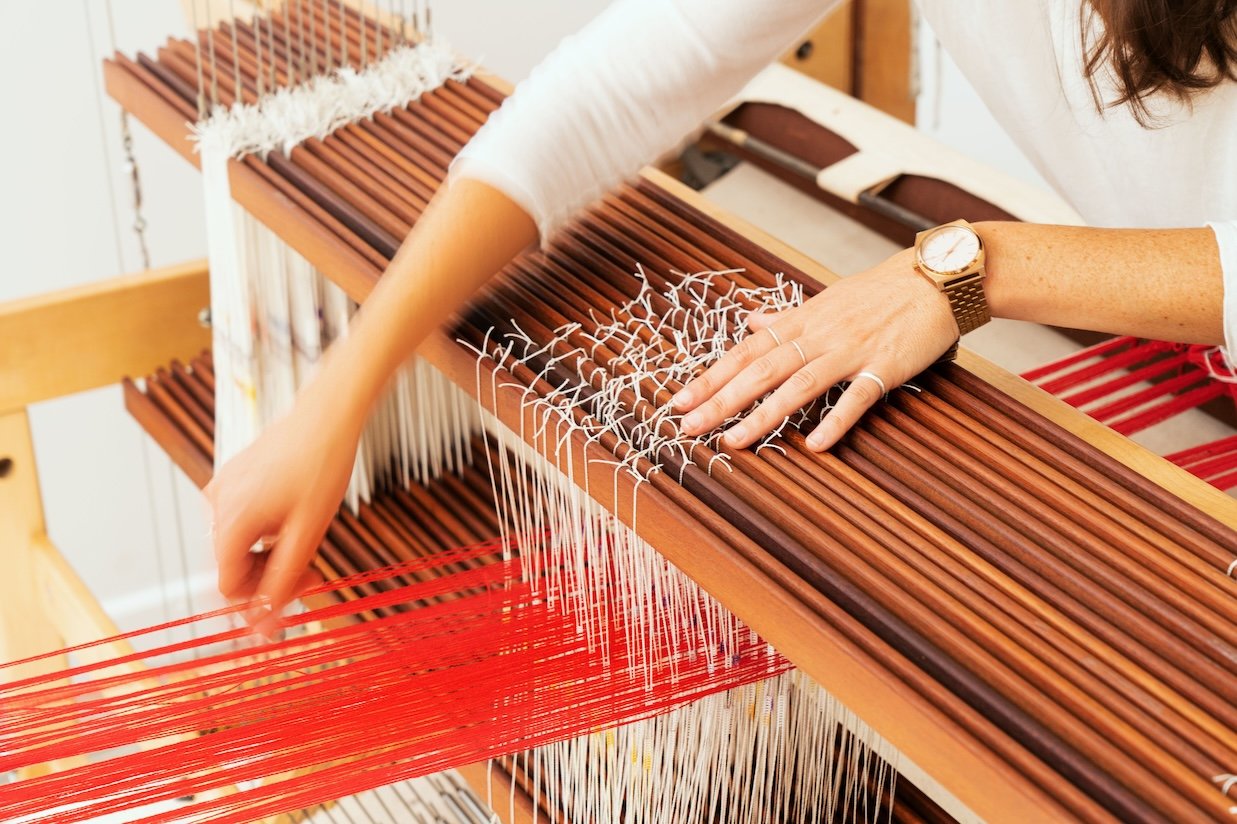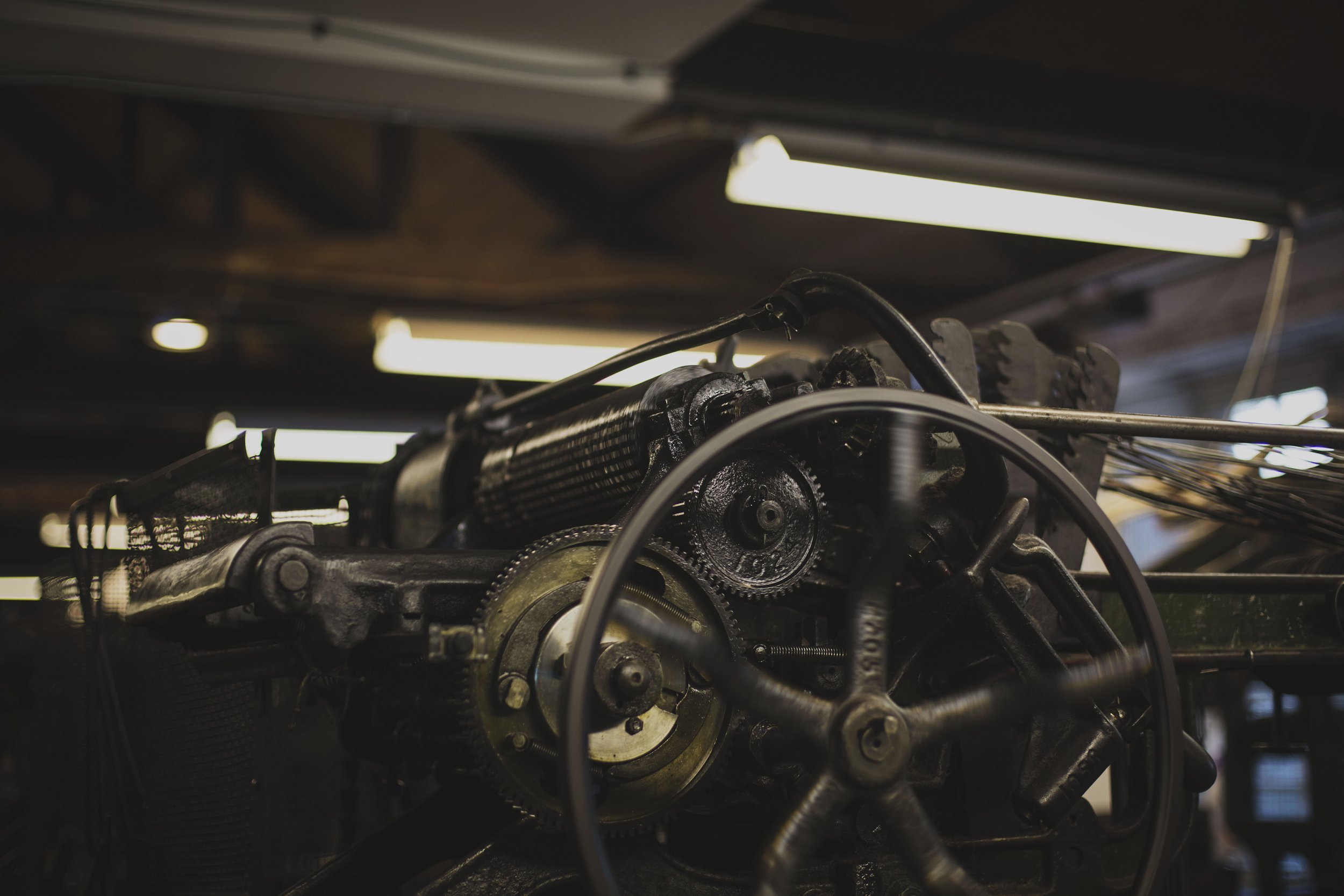
ME: LLIO
I was born and raised in a small village called Tal-y-bont, bang in the middle of Wales, but far West, a few miles from the Irish Sea and Cardigan Bay with a population of about 700 people, a primary school, post office, pharmacy and two pubs, what more do you need; a woollen mill? Imagine living in a village that used to have two woollen mills, yes, two manufacturing woollen mills producing tweed cloth for suit making. The wool was purchased directly from the local farmers, processed by water-powered machinery, woven by hand, washed in the river and sold onsite. The perfect circle.
Unfortunately, I came to this world after both woollen mills had closed. Was I inspired by the derelict buildings when I was growing up, was I amazed by the thought of my little village having two factories, is it in my blood, who knows?
The only thing I do know, is that the feeling of belonging to country and culture is important to me and one way of expressing this is through my work. I see weaving as a way to bring together industry and culture.
I went on to study textiles at Manchester School of Art. At that time, I wasn’t there to study the history of the woollen industry or even thought too much about the link to my upbringing, but interested in how textiles have such a huge part of our every day. Think about it, you’re born and wrapped in cloth. We put on clothing every day next to our skin. Our feet walk along carpets, on wooden floorboards on concrete slabs and sometimes even run along cobbled streets. We sit, drape, lounge on what will support and comfort our bodies. Textiles and texture is everywhere.

STUDIO
After Manchester, I went on to New York, gaining skills by working in a small design studio weaving window coverings. Weaving with PVC plastic wasn't for me, or my hands, but I was gaining experience, talking, quizzing and thinking, slowly filtering my interests even more. I left New York, and returned to Wales to work at a heritage centre. After some years I returned to education and continued with my studies at Bath Spa University, then found employment as a textile designer in Scotland. By now I’ve finally returned to Wales.
I work on a traditional dobby loom which fills every corner of my studio in Splott, Cardiff. As a hand weaver I’m able to adapt the work as it grows. Using my hands and eyes to build a contemporary cloth. Mostly working with wool, I hand weave bespoke cloth for interiors, but more importantly I hand weave cloth to be handled, to be used and to be loved generation after generation. I enjoy working in a space that allows me to experiment with colour, pattern and yarns, it also allows me to see how the cloth works in day to day spaces before developing my design choice.
Colour is a big part of the design process, looking at proportion, scale and geometric shapes. I create paper designs to see what ideas develop, and then move on to the loom.







PRODUCTION
There has been a huge decline in the woollen industry within Wales over the past few decades. In 1926 there were 250 mills, by 1967 we were down to 23 mills. Today there are around 10 working woollen mills within Wales.
As you can imagine, the remaining weavers have extensive knowledge and over 50 years experience. Working with them is very much a collaboration where we discuss, tweak and go back to the drawing board many times. I hand weave samples on my dobby loom and following discussion with the mill, the design is developed to be taken forward into production.
I want to develop the relationship between hand weaving and the woollen industry. Recently I’ve been working with a great team at Bristol Weaving Mill and we’ve developed a wonderful relationship. I want to continue the conversation with the weavers in the mill to create cloth for today.









